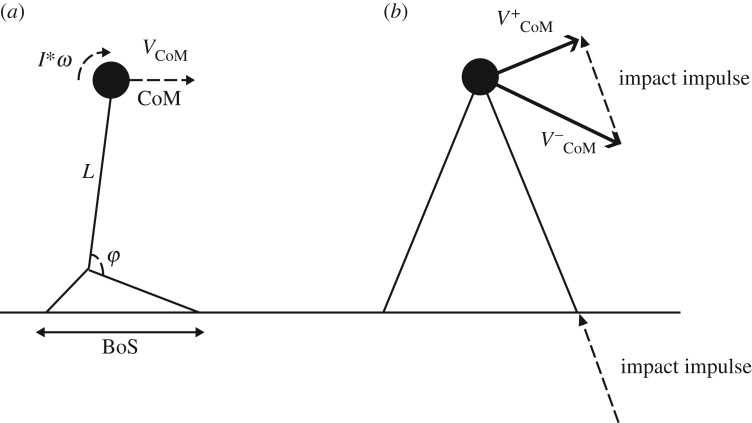Figure 2.
(a) The inverted pendulum model as used in many studies. In this model, the pendulum is assumed to rotate around the ankle joint, which is based in the foot segment, which has a certain BoS. All of the models we describe here take into account both the position (CoM) and velocity (VCoM) of the CoM. The FPE also takes into account the angular momentum around the CoM (I*ω). Furthermore, most methods further simplify this model by assuming that changes in the ankle angle (φ), only change the horizontal position (and velocity) of the CoM, not the vertical. Note that we draw here an AP schematic, but the same schematic holds for ML. (b) Finally, only the FPE method takes into account that when the BoS is shifted to regain stability, this coincides with a collision (impact impulse), which leads to the fact that the velocity after the collision  is lower than the velocity before the collision
is lower than the velocity before the collision  , and hence, when no energy would be added to the system, the XCoM concept (and other similar concepts that do not model the impact) may predict that stability may be achieved, this may not be so.
, and hence, when no energy would be added to the system, the XCoM concept (and other similar concepts that do not model the impact) may predict that stability may be achieved, this may not be so.

